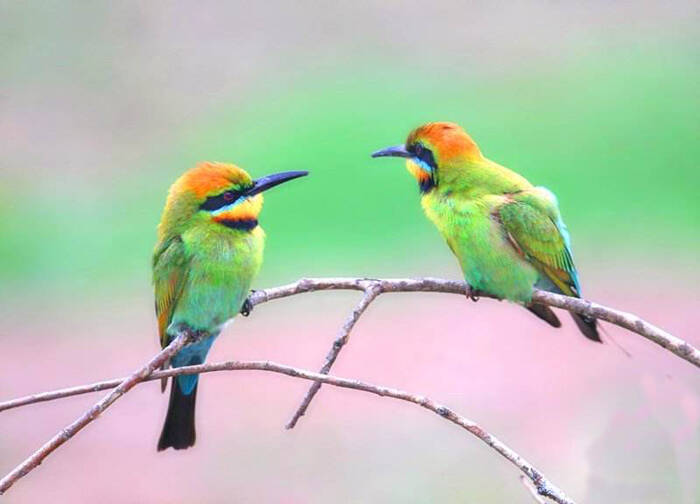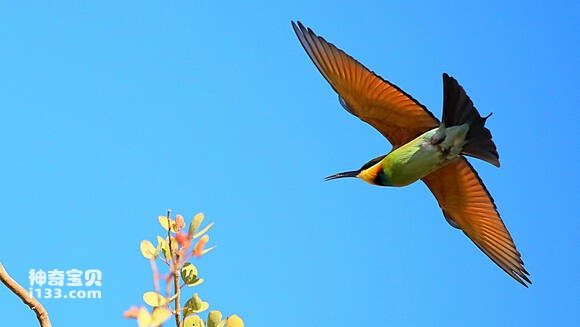Merops ornatus
IUCN
LCBasic Information
Scientific classification
- name:Merops ornatus
- Scientific Name:Rainbow Bee-eater,Merops ornatus,Rainbow Bee-eater
- Outline:Climbing birds
- Family:order family genus
Vital signs
- length:19-20cm
- Weight:20-33g
- lifetime:No verification information
Feature
The throat is reddish brown with a black triangular stripe under the throat
Distribution and Habitat
Origin: Australia, Indonesia, Papua New Guinea, Solomon Islands, East Timor.
Distribution: Japan, Palau, Taiwan, China.
Usually found in open woods, woodlands, shrubs and logging areas near water sources. It has also been found in farmlands, orchards and vineyards with residual vegetation.
Appearance
The male bird has chestnut red color from the top of its head to its back pillow, black above the eye line, and a light blue stripe under the eye. The cheeks are yellow, the throat is bright reddish brown, and the throat line is black; the back is green, and the upper tail coverts are sky blue; the upper wing coverts are green, the flight feathers are chestnut red, and the valgus is green, and the underwings are all chestnut red; the belly and undertail coverts are blue; The tail feathers are black, and the central tail feathers are extended and thin. The iris is red, the beak and tarsometatarsus are black.
The female bird is like the male bird, but the color of the back pillow is lighter, the central tail feathers are shorter and wider, and the iris is reddish brown.
The back and upper body of the young bird are olive green, the upper throat to the chin is light yellow, and the lower throat to the chest are reddish brown with vague stripes. No tail flutter and black neck feather
Details
Rainbow Bee-eater, also known as Rainbow Bee-eater, is a medium-sized green bee-eater with no subspecies.

Rainbow Bee-eater mainly preys on bees and wasps. Other prey include butterflies, moths, damselflies, dragonflies, beetles and most flying insects. They mostly forage in flight, quickly swooping down on prey from wires or dead branches. Some studies have found that spiders may also be included in their diet (Del Hoyo et al., 2001).
Rainbow Bee-eater Call: Sharp "chirp, chirp" sound.

Rainbow Bee-eaters can migrate in groups of up to 500 individuals. Groups distributed in Australia and New Guinea migrate to northern islands to hibernate in winter.

Rainbow Bee-eaters mate monogamously during the breeding season and breed cooperatively. During the breeding season, they live in groups, digging holes and nesting in low places such as flat land, low river banks, and mountain ridges. A nesting area can accommodate up to 50 holes. The egg-laying period varies from place to place. It is about September to November around Australia, September in New Guinea, and mid-September to December in South Australia. Generally, one nest is laid per breeding season, with 3 to 7 eggs per nest (4 or 5 eggs on average). The incubation period is 22 to 31 days. The chicks hatch on the same day and stay in the burrow for nearly a month. They are fed by the parent bird and the helper bird for 2 to 4 weeks before leaving the nest.

The Rainbow Bee-eater population is at least one million individuals (S.T.Garnett 2008). The population is stable, with no evidence of decline or threat to survival.
Listed in the IUCN Red List of Threatened Species: Least Concern (LC), assessed in 2012.
Listed in the second level of the China National Key Protected Wildlife List.
Protect wildlife and stop eating game.
Maintaining ecological balance is everyone's responsibility!








